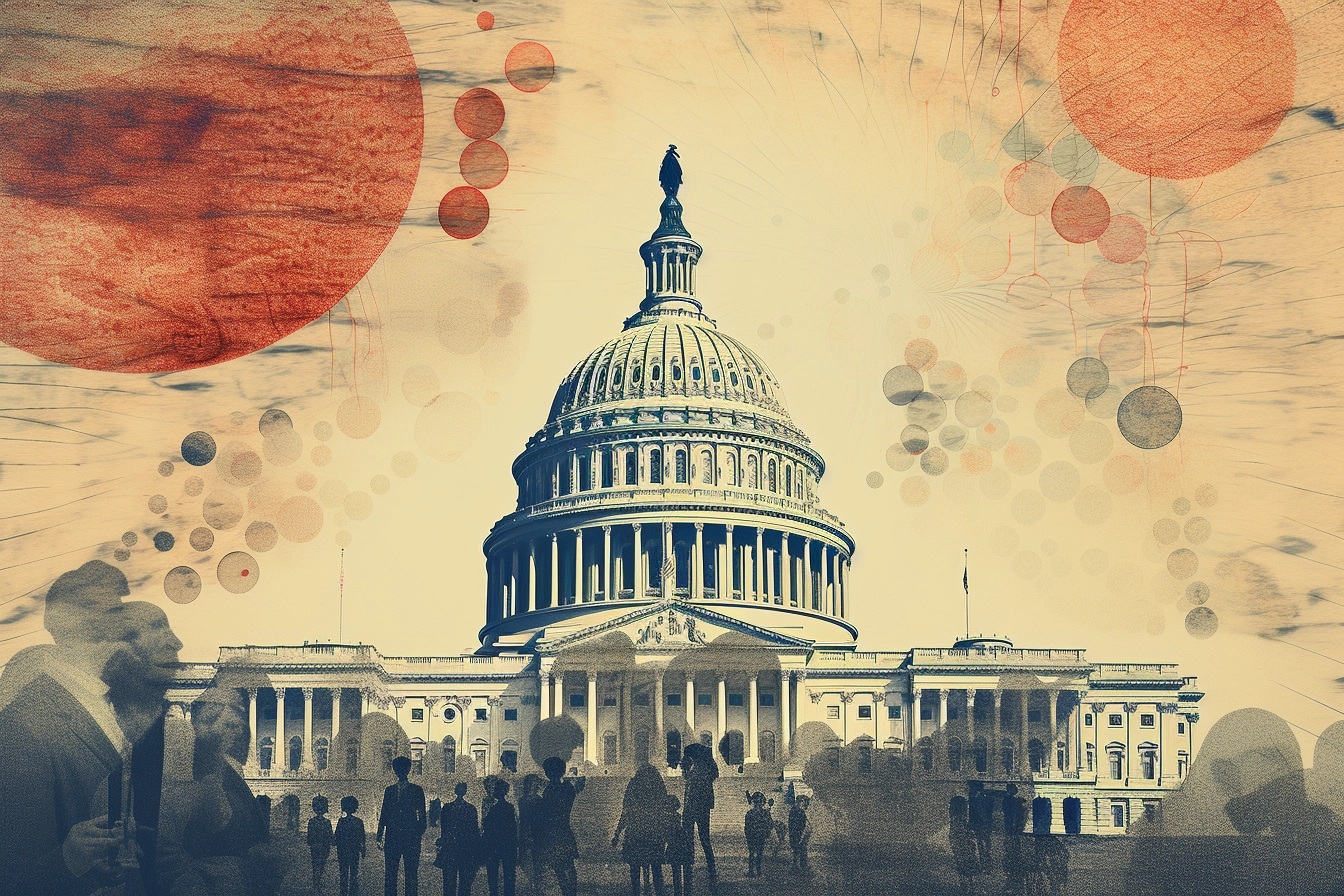This week in psychedelic news, prominent figures like Rep. Dan Crenshaw are advocating for research into the therapeutic potential of psychedelics for veterans, while groundbreaking studies from institutions like Lund University delve into the neural intricacies of these substances as the conversation around psychedelics evolves rapidly.
Update: U.S. Congress Members Continue Push For Psychedelic Medicine

In an update from NewsNationNow, Rep. Dan Crenshaw, a Texas Republican, has become a vocal advocate for researching the therapeutic potential of psychedelics, especially for veterans. His interest was piqued three years ago after two encounters with veterans claiming to have benefited from psychedelic therapies. As a veteran himself, Crenshaw felt compelled to explore how these substances might assist others like him. In response, he introduced the Douglas ‘Mike’ Day Psychedelic Therapy to Save Lives Act, named after a Navy SEAL who tragically took his own life. Crenshaw believes that such therapies could have potentially saved Day and many others.
The proposed legislation seeks to establish a grant program within the Department of Defense. This program would fund research into the use of psychedelics for treating post-traumatic stress disorder (PTSD) and traumatic brain injuries in active-duty service members. Notably, the bill has garnered bipartisan support, with representatives from both sides of the political spectrum co-sponsoring it. Rep. Alexandria Ocasio-Cortez, who had previously proposed similar legislation in 2019 only to face rejection, has joined the effort, expressing hope that the current bipartisan backing will further the cause of studying psychedelic-assisted therapies.
The U.S. Food and Drug Administration (FDA) has also shown interest in the potential of psychedelics. They recently released their first draft guidance on the use of psychedelic drugs for specific medical conditions, including psychiatric disorders and addiction. The FDA’s draft specifically mentions “classic psychedelics” like psilocybin and LSD, which impact the brain’s serotonin system, and “entactogens” or “empathogens” such as MDMA. Despite the growing interest and the legalization of psychedelics in several jurisdictions, they remain illegal at the federal level. However, predictions from JAMA Psychiatry suggest that a majority of states could legalize psychedelics by 2037.(1)
Brain Waves and Psychedelics: A Glimpse into Consciousness and Psychosis

As reported by ScienceDaily, researchers at Lund University have pioneered a method to simultaneously measure electrical signals from 128 distinct brain areas in awake rats. This groundbreaking technique was employed to observe the effects of psychedelic drugs, such as LSD and ketamine, on the brain’s neurons. The findings revealed an unanticipated synchronization of neurons across various brain regions. Utilizing brain electrical oscillations to gain insights into our experiences isn’t new. Pär Halje and his team, while studying rats with Parkinson’s disease, identified an 80-hertz oscillation in the brains of these rats, which was closely linked to their involuntary movements.
Interestingly, a similar wave pattern was observed in rats administered with a conscious dose of the anesthetic ketamine, known to induce psychedelic experiences in humans. However, these waves were detected in more cognitive brain regions and at a higher frequency. This led the researchers to speculate on the connection between excessive brain waves in motor regions causing motor symptoms and those in cognitive regions leading to cognitive symptoms. When the rats were administered LSD and ketamine, distinct wave patterns emerged, even though these drugs interact differently with the brain’s receptors. LSD seemed to inhibit neuron signaling throughout the brain, while ketamine had varied effects on different types of neurons.
Halje interprets these collective wave patterns as being intrinsically linked to the psychedelic experience. Rather than a single dominant wave propagating throughout the brain, the neurons’ activity synchronized uniquely, suggesting communication beyond just chemical synapses. While it’s still uncertain whether these waves directly cause hallucinations, they present a potential research model for psychoses, a field lacking effective models. Furthermore, these findings might pave the way for understanding the neural foundations of consciousness, especially in the era of AI, where the distinction between intelligence and consciousness becomes crucial.(2)
CULTURE SXSW Opens Voting On More Than 100 Marijuana And Psychedelics Panels For 2024 Festival

Coming to us from Marijuana Moment, the 2024 South by Southwest (SXSW) festival has officially opened voting for its panel discussions, with a notable increase in marijuana and psychedelics topics. Over the past few years, the Austin-based event has seen a surge in drug policy reform discussions, reflecting the growing momentum of cannabis legalization and the burgeoning interest in psychedelics reform at various governmental levels.
Recent SXSW festivals have witnessed a significant rise in psychedelics-related panels, mirroring the swift progress of the reform movement and research into substances like psilocybin, MDMA, and ayahuasca. This year, SXSW has introduced a dedicated track for psychedelics panels. Interestingly, for the first time, proposed panels on psychedelics (56 in total) have surpassed those on cannabis, which has 49 proposals.
Among the marijuana panels, topics range from the importance of advocacy in cannabis reform, the evolving politics of cannabis, the future of cannabis consumption, the booming cannabis industry in the southern U.S., to addressing the impacts of the War on Drugs through business.
On the psychedelics front, panels will explore questions like the potential of psychedelic experiences to enhance leadership qualities, the future framework for psychedelic-assisted therapy, the role of psychedelics in preventing deaths from severe mental health conditions, the future of psychedelic drug development and policy reform, and the journey of MDMA as a “breakthrough therapy” designated by the FDA.
These panels are just a fraction of the over 100 drug policy topics up for consideration. After the voting period, which concludes on August 20, the chosen panels, determined by public votes, event staff, and an advisory board, are expected to be announced by year’s end.(3)
Psychedelic Therapy Gaining Popularity as a Workplace Benefit

In a story from the NEWYORK Post, American companies are increasingly embracing psychedelic therapy as a workplace benefit, targeting conditions like post-traumatic stress disorder (PTSD), anxiety, and depression. Enthea, a health insurance administrative services startup, reported that around 50 firms have signed up to provide this unconventional perk to their employees. One such company, Dr. Bronner’s Magic Soaps, known for its natural soap and wellness products, granted approximately 7% of its 320-strong workforce access to ketamine-based alternative therapy. An internal survey revealed that of those treated with ketamine, 86% displayed reduced post-traumatic stress disorder symptoms, while 67% noted a decrease in depression-related symptoms. Additionally, 65% of the participants reported a decline in generalized anxiety disorder symptoms.
The medicinal and therapeutic use of psychedelic drugs. Google co-founder Sergey Brin has reportedly consumed magic mushrooms or psilocybin. Research from Johns Hopkins Medicine has indicated that patients with mental health disorders, including depression, have seen symptom improvements after psychedelic treatments. Clinical trials have further suggested that psychedelics might be as effective, if not more so, than conventional depression and anxiety medications. Johns Hopkins University’s studies found that therapy assisted by magic mushrooms can alleviate depression symptoms for up to a year, especially for those unresponsive to other treatments.
This growing body of evidence has spurred lawmakers in various states to push for decriminalizing or medicalizing magic mushrooms (aka psilocybin). States such as Arizona, Hawaii, and Oklahoma are considering research into psilocybin’s therapeutic benefits, while others like California, Connecticut, New York, Utah, and Washington are contemplating its therapeutic legalization or the initiation of pilot programs.(4)
DMT: A Potential Treatment for Brain Injuries

Algernon NeuroScience is pioneering the use of a proprietary DMT (N,N-Dimethyltryptamine) salt, designated AP-188 as a potential remedy for the aftermath of strokes and traumatic brain injuries (TBI). DMT, a member of the tryptamine family alongside psilocybin and psilocin, is a naturally occurring psychedelic compound. The groundbreaking aspect of Algernon NeuroScience’s venture is its status as the first global company to explore DMT as an immediate treatment for ischemic stroke and TBI. The initial phase of this exploration, a Phase 1 trial, is currently in progress at the Centre for Human Drug Research located in Leiden, The Netherlands.
How Does DMT Work?
According to their research, DMT is not just a compound found in external sources like plants and animals; it is also naturally produced in humans during intense physiological stress, such as cardiac arrest or childbirth. Its assumed roles span from cell protection and regeneration to immunity enhancement. The compound’s protective actions are believed to be linked to its property as a sigma receptor agonist.
Furthermore, psychedelic drugs, as a category, have shown potential in promoting neuritogenesis, both in living organisms and in controlled environments. This capability is thought to be a result of the agonism of the 5-HT2A receptor, though other receptors, including sigma, might also play a role. One of the notable effects of DMT is its ability to boost the expression of the brain-derived neurotrophic factor (BDNF), which is crucial for neuroplasticity. Neuroplasticity, in turn, is essential for the brain’s capacity to form and restructure synaptic connections, a process vital for recovery after a brain injury.
Apart from the aforementioned receptors, DMT also interacts with other receptors, encompassing 5-HT, dopamine, adrenergic, and trace amine receptors, as well as others.
Protecting the Innovation
Algernon has filed patents for novel salt forms of DMT, specifically DMT pamoate and nicotinate, to safeguard its innovative approach. These patents also cover formulation, dosage, and methods of use for ischemic and hemorrhagic stroke, as well as TBI. Additionally, the company has staked claims for a combination therapy that pairs DMT with stroke rehabilitation techniques, such as Constraint Induced Movement Therapy (a type intense of physical therapy).(5)
From Rep. Crenshaw’s push for the Douglas ‘Mike’ Day Psychedelic Therapy to Save Lives Act to the SXSW festival’s burgeoning interest in psychedelic panels, it’s clear that the perception and understanding of these substances are undergoing a transformative shift. As the FDA begins to recognize the potential of psychedelics for specific medical conditions and companies consider them as workplace benefits, the societal implications of these changes are profound. The journey of psychedelics, from taboo to therapeutic, is a testament to the power of research, advocacy, and open dialogue.
This material is not intended as a replacement or substitute for any legal or medical advice. Always consult a medical professional about your health needs. Psychedelics are widely illegal in the United States, and readers should always be informed about local, state, and federal regulations regarding psychedelics or other drugs.
- Shelton, C. (2023, August 10). Can psychedelics save lives? A GOP congressman says yes. NewsNation. https://www.newsnationnow.com/politics/can-psychedelics-save-lives-gop-congressman/
- How psychedelic drugs affect a rat’s brain. (2023, August 9). ScienceDaily. https://www.sciencedaily.com/releases/2023/08/230809130726.htm
- Jaeger, K. (2023, August 9). SXSW Opens Voting On More Than 100 Marijuana And Psychedelics Panels For 2024 Festival. Marijuana Moment. https://www.marijuanamoment.net/sxsw-opens-voting-on-more-than-100-marijuana-and-psychedelics-panels-for-2024-festival/
- Zilber, A. (2023, August 9). Psychedelic therapy for stressed workers gains traction at firms. NewYork Post. https://nypost.com/2023/08/09/psychedelic-therapy-for-stressed-workers-gains-traction-at-firms/
- AP-188. (2023). Algernon Pharmaceuticals Inc. https://www.algernonpharmaceuticals.com/pipeline/ap-188-dmt
 David Connell
David Connell


